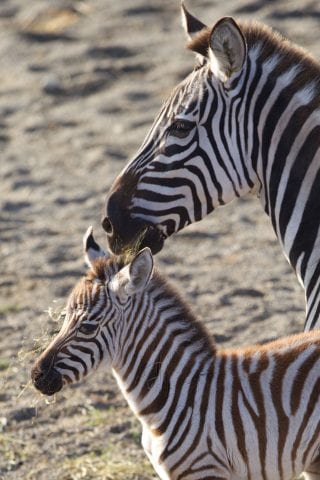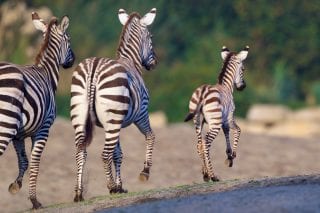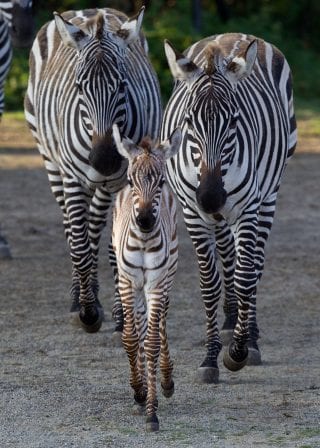Fun facts
Good communicators
Zebras make a wide array of sounds; they can snort, nicker, bray and use a high-pitched bark. These are all ways of communicating, with some being similar to sounds that horses make, and others, like the braying, being more like the sound a donkey makes. These noises can travel much greater distances in comparison to their other Equidae relatives.
Zig-zagging
Zebras are very fast animals, and can zig-zag when chased with great dexterity. They can reach speeds of up to 65km/h in the open, and foals can run with the herd mere hours after birth.
White stripes
Zebras are black, with white stripes not white with black stripes!
Recent research and embryological evidence has shown that the zebra's underlying, primary colour is black, with white being the addition on top.
Why so stripey?
Zebras are thought to have stripes for a variety of reasons; to keep them cool and regulate body temperature, and to confuse predators and biting insects.
Defensive measures
Zebras can be quite aggressive, and will defend themselves against predators by using their powerful kick, and by forming a protective semi-circle to ward off and face any attackers.


